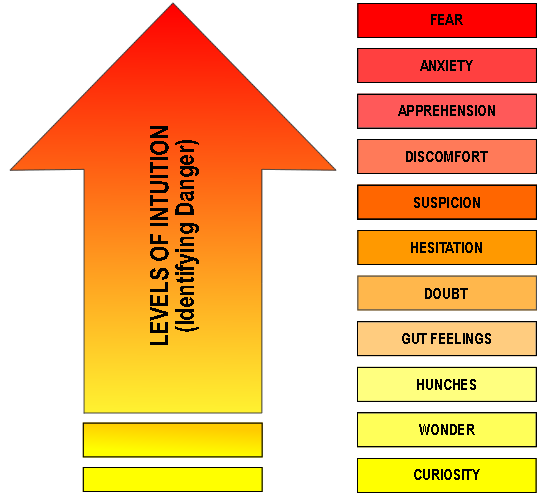- Our Schedule
- Join The Fun!
- Our Activities
- Tiny Tigers (Ages 4+)
- Taekwondo (Pre-/Teens)
- Yongmudo (Teens/Adults)
- Self-Defense
ACTIVITIES OVERVIEW
A straight forward approach to self-defense is something called The 3 A's.
Awareness.
Assessment.
Action.
Awareness is a knowledge of people and the environment in the immediate vicinity. Ideally, awareness helps an individual to circumvent and remove herself from a potentially harmful situation.
What is Intuition?
The simple explanation of intuition is that it is our decision-making shortcut. Commonly referred to as a “Gut Feeling” or a “Snap Judgement”, intuition is the ability to understand something immediately without the need for conscious reasoning. It is a process that relies upon our emotions and past experiences to bypass the slower, logic-based brain functions to inform us through body reactions (i.e., feeling in the stomach, hairs on the back of the neck, sweaty palms, etc.).
It is essentially the brain on autopilot, performing the actions of processing information without a conscious awareness that it is operating. It is “the power or faculty of attaining to direct knowledge or cognition without evident rational thought and inference.”
According to Gavin de Baeker, author of The Gift of Fear, intuition is knowing without knowing why.
In the following video, Daniel Cordaro Ph.D., explains the science behind intuition, where is comes from, why we have it and how we can use it to our benefit in the following video.
Pay attention to all the “funny feelings” that we usually ignore.
Trust the Gut. Recognize, acknowledge, and trust the “gut feeling,” the feeling an individual has when something is not right. If something does not “feel” right, it probably isn’t right.
Primary signals. Curiosity, Wonder, Discomfort, Anxiety, Fear. Pay attention to these signals.
Significance. Intuition provides significance to observations by bringing awareness of the world around us to a conscious level.
Why it’s ignored. Attentiveness to intuition is ignored because the signal is dulled by judgment and rationalization. “We deny because we’re built to see what we want to see.” (32)

| Scanning for Safety: Pay Attention! | |
|---|---|
| Immediate Environment | Escape Routes. Doors? Windows? Indoors? Outdoors? Lighting? Other People? Number, proximity, and identity of other people. Help or threat? Large objects. Barriers for protection such as desks, beds, couch, table, etc. Small objects. Weapons for you or others? Time of day. Day? Night? Dusk? Morning? Visibility? Other people nearby? Evidence of substance abuse or intoxication. Bottles? Needles? |
| Threatening Individual | Identity. Is this person known? What is known about them? Positioning & Proximity. Is another person(s) blocking the escape route(s)? Size, Strength, & Conditioning. Does the attacker appear fit? Demeanor, Stance, & Posture. How do they look? Jaws clenched? Blinking? Emotional State. Agitated? Angry? Frustrated? Confused? Irrational? Gait & Gestures. How are they walking? Unsteady? What are their hands doing? Clothing. What message do their clothes convey? Speaking. How and what? Loud and belligerent? Slurred speech? Possession of Weapons. Does it look like they have a weapon? Get away! |
| Yourself | Strengths. Run fast? Hit hard? Scream loud? Kick well? Presence of mind in stressful situations? Skills. Speaking/Communication? Martial arts? Feeling state. Remain calm? Think clearly re: options and possible outcomes? |